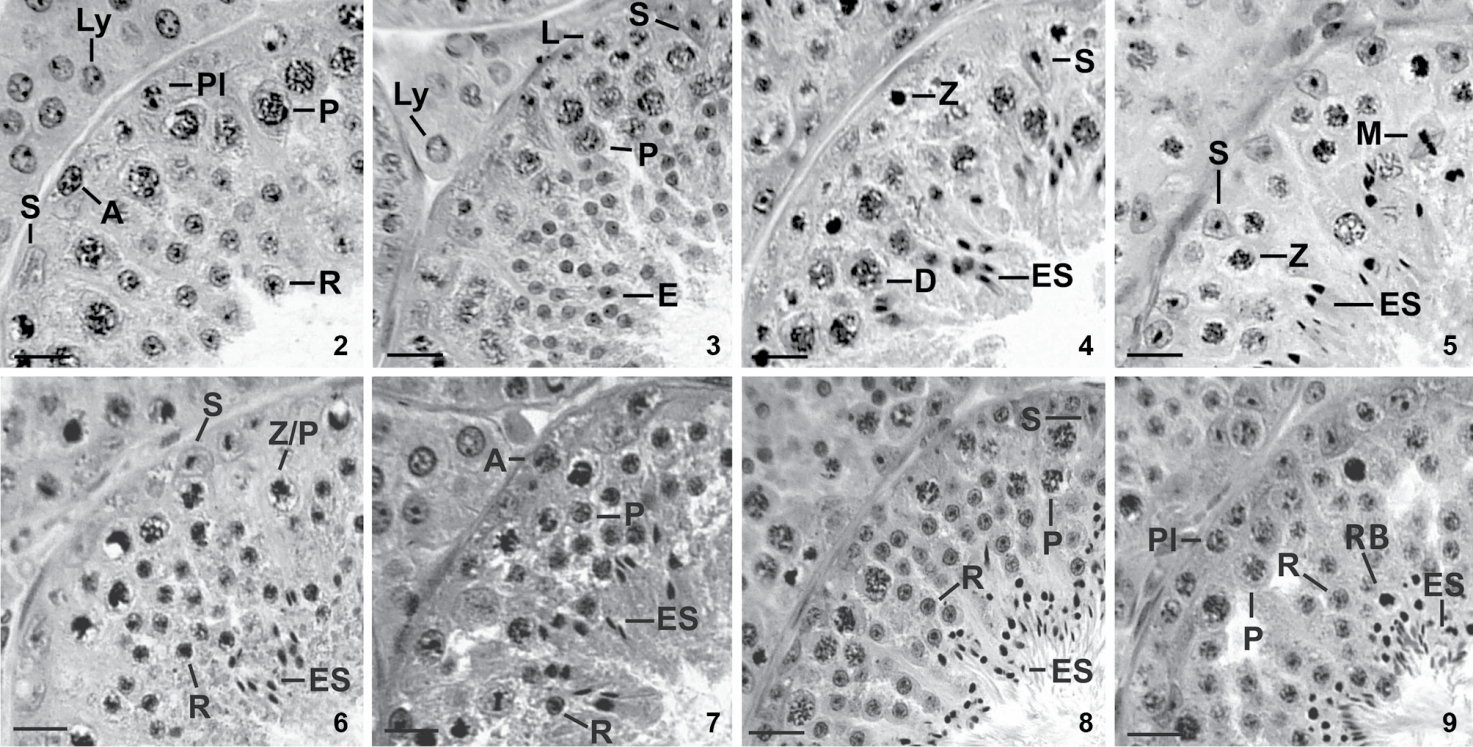The large fruit-eating phyllostomid bat, Artibeus lituratus (Olfers, 1818), forearm 69-75 mm, body mass 66-82 g, has a diversified geographic distribution in the Neotropical region. Therefore it is subjected to different climatic conditions that affect its reproduction, leading to different reproductive strategies such as continuous reproduction, seasonal monoestry or seasonal bimodal polyestry. In this study we used morphometric and histological methods to analyze the annual reproductive activity of A. lituratus males in a population living in the Atlantic Forest, Southeastern Brazil. Testis mass, epididymis mass, gonadosomatic index, seminiferous tubule diameter, and Leydig cell nucleus diameter showed no significant differences (p > 0.05) in the two seasons (wet: October to March; dry: April to September). Additionally, the cauda epididymis was packed with sperm throughout the period of study. Our data indicate that in this population spermatogenic activity was continuous throughout the year. Slight variations in accumulated frequency of pre-meiotic, meiotic and post-meiotic stages of the seminiferous epithelium cycle were observed when compared to other bat species, probably due to species-specific characteristics.
Morphometry; Neotropical bat; seminiferous epithelium; spermatogenesis; reproduction

 Thumbnail
Thumbnail
 Thumbnail
Thumbnail
 Thumbnail
Thumbnail



